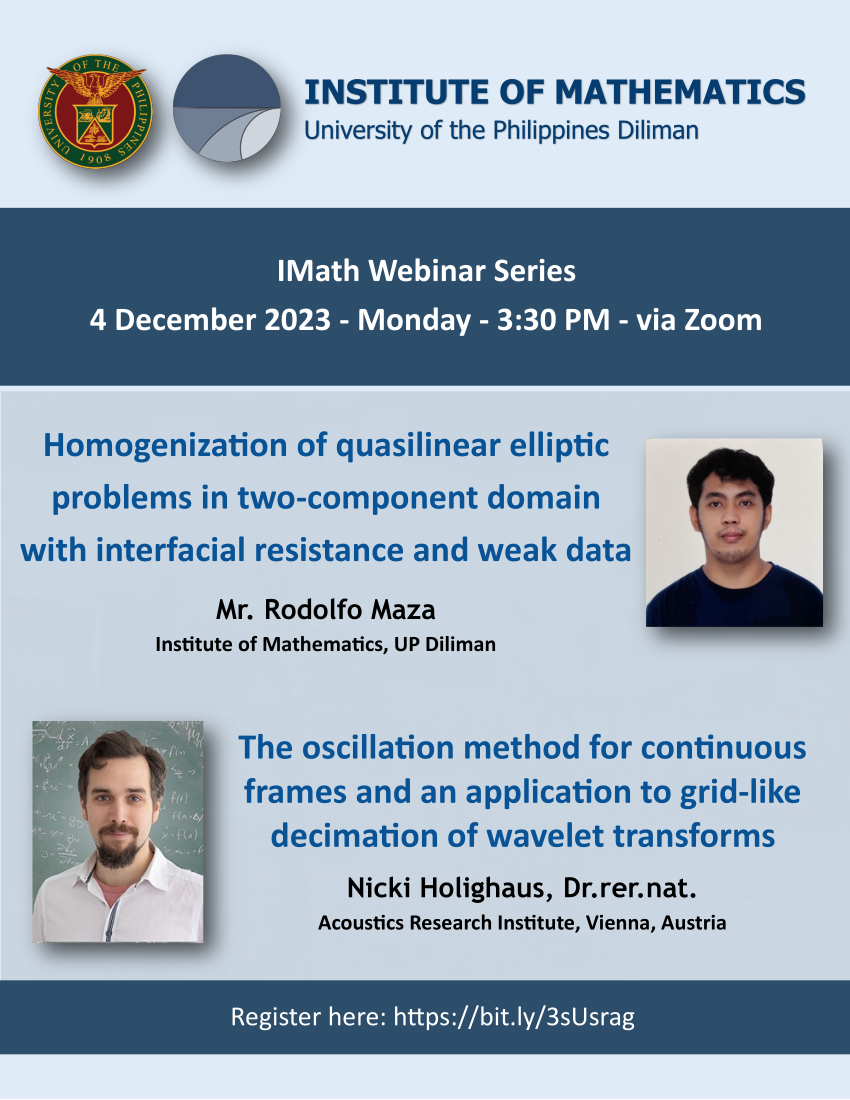IMath Webinar Series: Rodolfo Maza and Nicki Holighaus, Dr.rer.nat.

You’re all invited to attend our webinar on Monday, December 4, 2023 at 3:30 PM via Zoom. Our speakers are Rodolfo Maza (from the Differential Equations Research Group) and Nicki Holighaus, Dr.rer.nat. (from the Acoustic Research Institute, Vienna, Austria, hosted by the Optimization and Approximation Research Group).
Rodolfo Maza (Differential Equations Group)
Title: Homogenization of quasilinear elliptic problems in two-component domain with interfacial resistance and weak data
Abstract: This talk will discuss the homogenization of quasilinear elliptic problems with a jump on the interface between the two components proportional to the flux in the of order \(\varepsilon^\gamma\). Moreover, the data is presumed to be an \(L^1\) function and the matrix field is not presumed to have a restricted growth. Consequently, the concept of renormalized solution is implemented.
In the homogenization process, we employ the periodic unfolding method. The homogenized problem was afterwards identified to be a quasilinear elliptic problem with weak data for the case that the parameter \(\gamma\) is less than 1 with the exception of \(\gamma = −1\).
Nicki Holighaus, Dr.rer.nat. (Acoustics Research Institute, Vienna, Austria, hosted by the Optimization and Approximation Group)
Title: The oscillation method for continuous frames and an application to grid-like decimation of wavelet transforms
Abstract: A continuous frame \(\Phi\) is a family of functions in a Hilbert space, indexed by a measure space \((\Lambda,\mu)\) and associated with a norm-preserving integral transform. In this talk, I will provide a short introduction to the oscillation method for continuous frames, which can be considered as a means to use geometric arguments on the space \((\Lambda,\mu)\) for constructing discrete frames from \(\Phi\), i.e., countable subsets of \(\Lambda\), such that the \(\Phi\)-induced integral transform remains norm preserving when only considered on the countable subset. For reasons of accessibility, we will restrict the discussion to Parseval (or 1-tight) continuous frames. We will then use the oscillation method to derive 2 types of grid-like discretization rules for the continuous wavelet transform, partially motivated by their ease of implementation.
